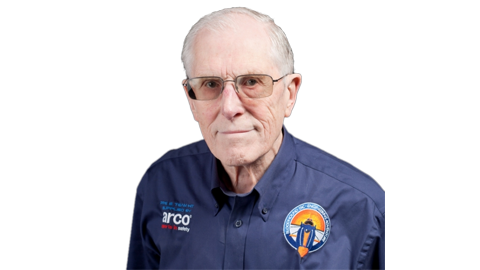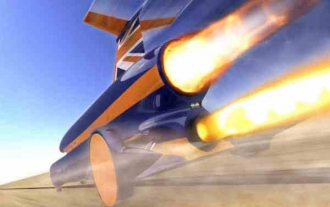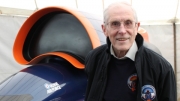
by Ron Ayers, Chief Aerodynamicist
 The last major redesign of Bloodhound occurred when we swapped the position of the jet engine and the rocket engine. You may recall that, when we commenced the project, the rocket was mounted above the jet engine. This had the advantage that the heavy jet engine was situated low down so that the centre of gravity was as low as possible.
The last major redesign of Bloodhound occurred when we swapped the position of the jet engine and the rocket engine. You may recall that, when we commenced the project, the rocket was mounted above the jet engine. This had the advantage that the heavy jet engine was situated low down so that the centre of gravity was as low as possible.
However, it had the disadvantage that the high thrust line of the rocket resulted in a strong nose-down pitching moment which would cause the vehicle to suffer from over-steer. Putting the rocket under the jet certainly reduced that problem as the nose down pitching moment from the jet engine was much less than that from the rocket. (see pictures right: BLOODHOUND SSC's original 'Rocket over Jet' configuration (above) and 'Jet over Rocket' configuration (below)).
 As frequently happens in engineering, the solution to one problem aggravates another one. The new ‘jet on top’ configuration suffered from higher drag, and vertical forces that were very Mach number dependent, particularly on the rear wheels. A sophisticated analysis technique (called the ‘Design of Experiments’) assisted us in arriving at a configuration which appears to resolve all these problems (See Config 10 - the Holy Grail) so things were going well.
As frequently happens in engineering, the solution to one problem aggravates another one. The new ‘jet on top’ configuration suffered from higher drag, and vertical forces that were very Mach number dependent, particularly on the rear wheels. A sophisticated analysis technique (called the ‘Design of Experiments’) assisted us in arriving at a configuration which appears to resolve all these problems (See Config 10 - the Holy Grail) so things were going well.
But things never go smoothly in the realms of Land Speed Records. A more recent weight analysis showed that the predicted centre of gravity position has moved significantly aft. To make matters worse, recent small changes in external geometry had combined to move the yaw centre of pressure in a forward direction. The combined effect of these two changes is that the predicted yaw stability has now reached unacceptably low levels. We are still working on the solution to this, but you can expect future layouts to include a yaw fin that is significantly larger than the one in configuration 10 illustrated above - it may look something like the one below, but work is still in progress, so watch this space!
 Disappointing? A little.
Disappointing? A little.
Surprising? Not at all.
During a long career designing high speed vehicles, I cannot recall a single project where we were not struggling to satisfy stability criteria.
 Why does it happen? Well, jet and rocket engines must obviously be situated near the back of the vehicle so that they can function. Thus, we start with heavy components near the back of the vehicle. This pulls the centre of gravity towards the back but for a stable vehicle, the centre of gravity should be well forward. Naturally, we put as many heavy components as possible near the front, but this aspect of design is always a struggle.
Why does it happen? Well, jet and rocket engines must obviously be situated near the back of the vehicle so that they can function. Thus, we start with heavy components near the back of the vehicle. This pulls the centre of gravity towards the back but for a stable vehicle, the centre of gravity should be well forward. Naturally, we put as many heavy components as possible near the front, but this aspect of design is always a struggle.


